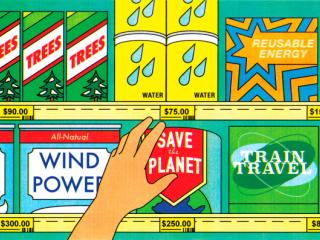David Nutt believes psychedelics will revolutionize the treatment of mental disorders. A neuropsychopharmacologist at Imperial College London, he says psychedelic therapy can help people resolve their buried traumas.More
Science and Technology
Missy Makinia donated her kidney to whoever might need it. Her transplant surgeon — Josh Mezrich — invited Shannon into his operating room to see firsthand what it takes to remove and transport a human kidney.More
Gavin Francis is fascinated by the complexity and beauty of the human body, which is so finely engineered that it can seem almost miraculous.More
Porochista Khakpour has been fighting a mystery illness for as long as she can remember. Eventually, she got a diagnosis — late-stage Lyme disease — but a diagnosis hasn't given her much resolution.More
The feminist eco-philosopher Val Plumwood was one of the few people to survive a crocodile's death roll. The attack reoriented her thinking about life, death, and what it means to be human.More
Squirrels and pigeons share our sidewalks and park benches. Crows pick through our trash, rabbits munch on our lawns. They watch us; we ignore them. What would change if we actually met their eyes? More
Dogs, cats, birds, frogs, even insects watch us. Each with a different kind of eye. What, and how, do they see? Ivan Schwab is an ophthalmologist who’s been fascinated by that question for a long time.More
Bill Linton is on a mission. He wants to get FDA approval for using psychedelics to treat depression and addiction. So he co-founded his own nonprofit psychedelic center, Usona Institute, to help revolutionize the treatment of mental illness.More
While one way of making life better for parents could be changing the structure around us, author and reporter Michaeleen Doucleff thinks parents could learn to do things differently — taking cues from mothers and fathers in ancient civilizations.More
You know those moments when everything clicks and you’re performing at your peak? Jamie Wheal explains the science behind flow states.More
One of the most famous experiments of modern science was a series of pioneering field studies of the great apes. They were all done by women, chosen by legendary anthropologist Louis Leakey. Jane Goodall and Birute Galdikas tell this amazing story.More
Manu Prakash invented a paper microscope that’s now being used in research labs and classrooms around the world.More
How does the world look to a scientist? We asked astrophysicist Neil deGrasse Tyson….and he gave us some cooking tips.More
Nothing makes Hope Jahren happier than tinkering in her lab, studying fossilized plants. More
After a health scare, Annabel Abbs promised herself she'd make a real effort to walk every day. She fell in love with walking, even began taking multi-week walking vacations. And then she discovered she wasn't the only one — there's a hidden history of great women walkers from the past. So she decided to tell their stories.More
Unless you walk or bike to your next vacation destination, you’ll probably have to burn some fossil fuels to get there. Blogger Kathryn Kellogg is a guru of zero-waste living. She has a few tips on how to reduce your impact on the environment when you travel. More
Is there a special mountain in your life? David Hinton, who lives in Vermont, told us about the one he knows best — Hunger Mountain - which he's climbed 300 times. His thinking about mountains has been shaped by his study of ancient Chinese poetry.More
Environmental philosopher and bonafide "mountain man" John Hausdoerffer explains how mountains are connected to all life on earth, and what it means to treat them as "living kin."More


















